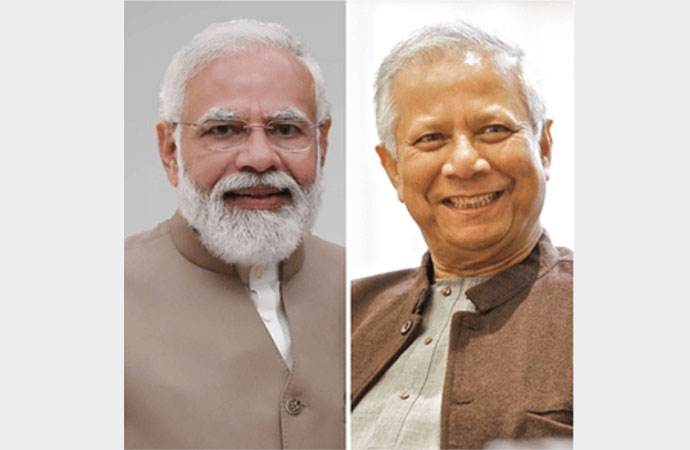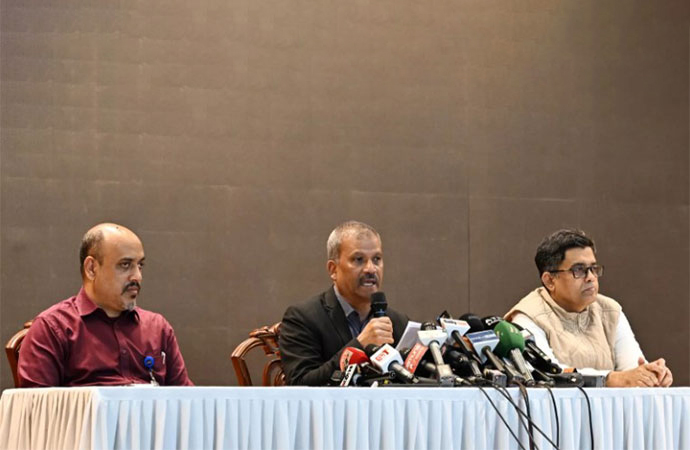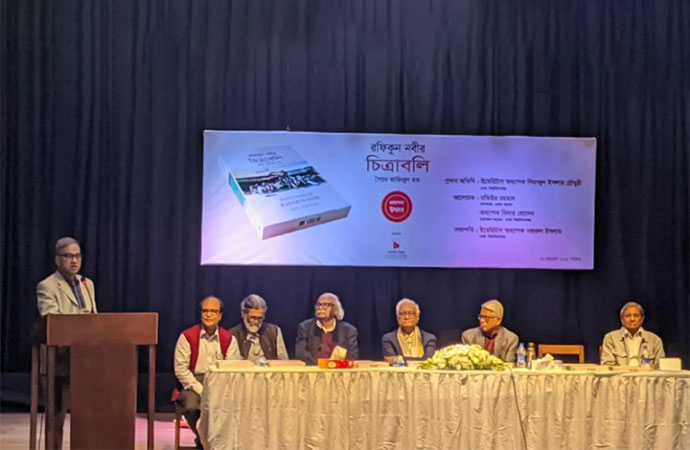Reportage

In August, consumers in Chittagong became the first in Bangladesh to get supplies of the expensive Liquefied Natural Gas imported by Bangladesh from abroad, following its successful re-gasification on a floating storage and re-gasification unit (FSRU), which is a large vessel incorporating the FSRU placed off the coast of Maheshkhali.
State-owned Rupantarita Prakritik Gas Company Limited (RPGCL) has been importing LNG from Qatar while another state-owned entity Gas Transmission Company Ltd (GTCL) is entrusted with the responsibility of transmitting the gas to the national grid.
The maiden consignment of imported LNG reached the country on April 24 through the FSRU-based vessel. But due to some leakages and technical glitches, the RPGCL could not supply the imported gas to the national network in the first three months. The leakages and technical problems were finally fixed in August and since then the FSRU has been supplying the gas to the network.
"We've started receiving gas supply from FSRU on and it still remains under a supply protocol," Engineer Khaiz Ahmed Mozumder, Managing Director of Karnaphuli Gas Distribution Company Ltd (KGDCL), announced to the media. KGDCL is entrusted with distributing gas to entire Chittagong and its adjoining areas where the demand for gas is about 500 mmcfd (million cubic feet per day).
The FSRU is moored off Moheshkhali island in the Bay of Bengal, and attaches itself to a buoy so that it can supply gas to the mainland from 7.5km out. US-based Excelerate Energy will operate the terminal under a build-own-operate-transfer model and pass it to state-owned Petrobangla after 15 years.The country's first LNG terminal gasifies the liquid gas and pumps it into the 91km undersea pipeline linked with the grid in Anwara of Chittagong. The pipeline was set up by Gas Transmission Company Ltd.
KGDCL officials said they are getting the LNG supply from Anwara point to its ring main line network while the existing Fouzdarhat point is receiving it from the national network. Bangladesh will be able to add another 500mmcfd once a second terminal is brought online. The facility is being developed by Summit Group, which has signed an agreement to charter one of Excelerate's FSRUs, and is expected to be online by the end of 2018 or in the first quarter of 2019.
The import of LNG is part of the government's efforts to eliminate gas shortages as Bangladesh's own reserves dry up. It thus marks the end of an era of cheap gas for households and industries. The country is being forced to look outside to alleviate its energy shortage largely caused by depleting domestic reserves and rising demand. At present gas supply stands at about 2,700mmcfd against the demand for 3,300mmcfd.
Bangladesh will buy LNG on its own from RasGas of Qatar under a government-to-government purchase agreement. Last year, the country signed a 15-year contract with RasGas, which would supply 2.5 million tonnes of LNG every year.
The LNG would be supplied at 12.65 percent of the three-month average price of Brent oil plus $0.50 constant per million British thermal units. Apart from Qatar, Bangladesh will also import LNG from Oman. A supply agreement with Oman Trading International has recently gained the government's approval. The Asian LNG spot price of $7 per million British thermal units this week is three times higher than natural gas extracted locally.
The average retail price of gas supplied by Petrobangla from domestic sources is Tk 7.39 per cubic metre. But when LNG is mixed with local gas, the average price might rise to about Tk 13 per cubic metre, based on Energy Ministry calculations.
It has prompted gas suppliers to request the Bangladesh Energy Regulatory Commission for fresh hikes in gas prices. They are seeking an average of 75 percent hike, from Tk 7.39 per cubic metre to Tk 12.95. The suppliers, however, are not asking for price hike of gas for cooking stoves and commercial consumers, only for industries, power stations, filling stations, fertiliser factories, and tea estates.
The commission last raised the gas prices by about 22 percent on an average in two phases, from March 1 and June 1 in 2017.
Fuelling the boom
Natural gas has a lot going for it. It burns cleaner than other fossil fuels, producing about half the carbon dioxide of coal. Thanks to new discoveries and the U.S. shale boom, it's cheap and plentiful on the world market. But there's a catch: Gas is tricky to transport from the often-remote fields where it's found to where it's needed - places such as China, India and Bangladesh. In many regions, pipelines simply aren't practical. The solution? Turn the gas into a liquid by super-cooling it to minus 162 degrees Celsius (minus 260 degrees Fahrenheit).
Liquefied natural gas, known as LNG, gets loaded onto massive ships and transported around the world. This high-tech process has transformed natural gas into a mobile, freely traded commodity and reshaped the politics of global energy, according to Bloomberg. It is also very expensive. Yet more countries are trading in LNG, with 40 nations importing it and 19 exporting at the end of 2017.
The induction of LNG into the national grid from the floating Maheshkhali terminal in the Bay of Bengal is expected to ease an acute gas shortage that is worsening as domestic reserves are depleted. However, concerns remain over the long-term viability of imported gas as a significant part of the country's energy mix.
According to M Tamim, a professor of the Petroleum Engineering Department at Bangladesh University of Engineering and Technology, there was no other option for the government but to import LNG "as the economy is gas-based".
He said the energy cost for energy-intensive industries would go up because of the blending of the $10 per thousand cubic metre LNG with the $3 per thousand cubic metre of local gas.
The country's garment industry has slammed the hikes, saying that relatively cheaper power tariffs are needed to maintain Bangladesh's competitive advantage over other developing countries in terms of production costs. In response, the prime minister's energy adviser has promised the powerful textile bosses to keep hikes "reasonable" and to lean on Titas Gas to cut out corruption.
As the government attempts to bridge this gap between international and domestic LNG prices, state subsidies are looming as the key battleground-it's estimated that these will soar to around $1.8bn per year.
"[The government] will either face domestic opposition over increasing the gas tariff to reflect the cost of imported supply or it will have to subsidise gas use by absorbing the difference," the Oxford Institute for Energy Studies said in a recent report. "The latter is unlikely to be sustainable in the long term, as the size of subsidy will balloon as gas imports rise."
While local businesses may complain about gas prices, the economic impact of shortages stemming from diminishing domestic reserves may be worse. Most textile factories have captive gas-fired power plants, and last November shortages disrupted production in 350 units in Dhaka alone, according to the Bangladesh Garment Manufacturers and Exporters Association.
"Combined gas and power shortages impact economic growth. The introduction of LNG into the fuel mix is a critical step in overcoming these challenges", consultancy Wood Mackenzie wrote in a recent analyst note.
The investments in LNG infrastructure and long-term contracts secured by Petrobangla in recent months position imported natural gas as a viable solution to the energy shortfalls that are impacting on the economy. However, once import volumes begin to ramp up, the sustainability of sizeable annual subsidies could increasingly come into question-particularly if Asia's thirst for LNG prompts greater price volatility, according to Petroleum Economist.
Bucking global carbon emissions trends, Bangladesh plans to transition towards a coal-dominated power sector by 2030, but imported LNG is seen as an "essential stopgap" while plants are constructed. Firms including Indonesia's Pertamina and Japan's Mitsubishi are also scheduled to build two combined-cycle gas turbine power plants in the near future. The power ministry expects electricity demand to spike to 34,000 megawatts in 2030, up from 10,000 MW in 2017.
The end of gas?
The relative expense of importing natural gas and the environmentally harmful effects of dependence on coal, which still now remains a bit-part player in the fuel mix for producing energy in Bangladesh, prompts the question: has Bangladesh truly exhausted all its options?
Natural gas is the most important indigenous source of energy that has been continuously produced and consumed in significant quantities since 1970. About 75% of the commercial energy of the country comes from natural gas. So far 26 gas fields have been discovered of which two of the gas fields are located in offshore area. As Bangladesh lacks the technical capability to conduct gas exploration on its own, it is forced to sign specific contracts (PSC) with foreign companies. At present 51% of total gas has been produced by four International Oil Companies.
Gas, the main source of commercial energy, plays a vital role in the economic growth of Bangladesh. The natural gas consuming sectors in Bangladesh are: i) Power, ii) Industry, iii) Fertilizer, iv) Captive power, v)Domestic, vi) Commercial, and vii) Transportation (CNG). The major consumers of gas are the power and industrial sectors, which account for 43% and 17% respectively. However, per capita primary commercial energy consumption in Bangladesh is still one of the lowest in the world. With increasing population and urbanization this is expected to increase. Developing an over-reliance on imported fuel at this stage may leave the economy exposed.
Some experts are of the opinion that Bangladesh has not done enough to explore its own reserves of gas. At the same time the country has done little to ensure the efficient use of its proven reserves. The "Sylhet basin", as it is called geologically, has been pro very rich gas province. Several very large to giant gas fields have been discovered in close proximity and the success ratio is abnormally high, almost 1:1, meaning success in every one well drilled. The Sylhet basin holds almost 90 percent of the total gas reserve in Bangladesh and includes Bibiyana, Titas, Rashidpur, Habiganj, Kailashtila, Jalalabad and other gas fields. These gas fields are the backbone of the installations supplying gas to the national grid.
Dr Bardul Imam, a retired professor of geology and energy expert, is one of the experts who believes not enough has been done to explore the possibility of finding more gas reserves in other parts of the country, particularly the south.
"Firstly, there has not been enough exploration drilling in the area, meaning that drillings are few and far between in terms of space and time," according to Dr Imam. "And secondly, and perhaps more importantly, the wells that were drilled, in many cases, had been declared dry and abandoned although there is clear evidence of gas horizons in the subsurface. The wells were abandoned without complete and conclusive tests following the drilling operations."
He puts forward several examples to back up his claims. The Patia-1 well was dug in 1953 by a foreign oil company some 25km southeast of Chittagong city. But the drilling technology in those days meant heavy mud used in the process may have prevented any gas available from coming out. The well was eventually declared dry and abandoned. Dr Imam is of the belief that retesting the well with modern technology would yield very different results.
Similarly the Jaldi-1 well was drilled in 1965 at the Jaldi hills about 90km southeast of Chittagong city. The well was drilled to a depth of 2300m, but once again, due to the heavy mud used in the process in those days, the gas was prevented from coming up. Dr Imam is convinced that Patiya and Jaldi are sitting on gas reserves that modern technology used in drilling can definitely unlock. The Sitakunda hills is another area where he believes not enough has been done to access gas reserves viably.
Further away from Chittagong, Dr Imam holds up Patuakhali and Noakhali as promising areas for exploration. He points to the recent finding that the Shahbazpur gas field in Bhola Island is much bigger than previously thought and the discovery of a new gas field in the northern part of the same island, as proof that southern Bangladesh is very rich in natural gas reserves.
"It would be very unusual for the largest delta basin (Bangladesh) in the world, which has already found world-class gas fields in one part (Sylhet basin), to be gas-poor in other parts," he concludes.
To its credit, Bapex, which is tasked with the exploration of new reserves, has not completely stopped looking. In fact it has been negotiating with some Chinese companies to sign joint venture (JV) agreements for several years now to explore Jaldi and Patiya, but no conclusive agreement has been reached. Some petroleum scientists believe Bangladesh might as well go it alone in that case, if no willing foreign partner is found. If successful, that would ensure even greater benefits for the nation of course.
For now however, LNG looks to be the future, for the foreseeable period at least. If the transition to coal is successful, as factored into the country's long term electricity generation masterplan, the pressure on the economy can be expected to ease a bit. Yet that is by no means certain, given that even the first few coal-fired plants being built right now are penned in to use imported coal - which is still cheaper than imported LNG, but then the savings may not be enough to offset the environmental cost incurred. In any case, no matter how we look at it, the era of cheap energy in Bangladesh is over. Unless geoscientists like Dr Imam are right.

























Leave a Comment
Recent Posts
Reflections on Press Freedom
Having been ensconced in the country’s media landscape in a vari ...
Rejuvenating EU ties in an era ...
Ernst B. Haas coined the theory of neo-functionalism to describe the E ...
Farmers Are Not Only Food Producers, They Are Also V ..
10-day 'Amar Ekushey Natyotsab 2025' kicks off at Su ..
How the tables were turned on Ukraine
The New Face of Protest